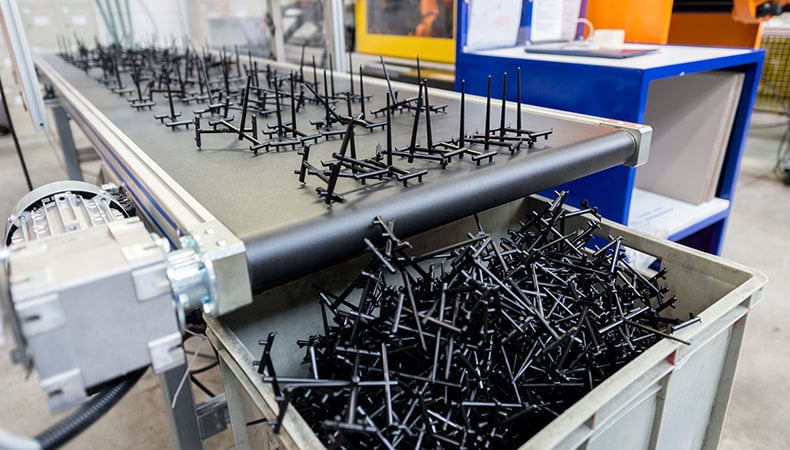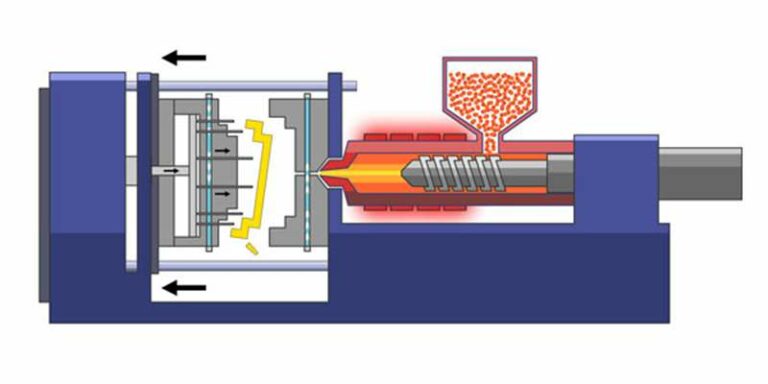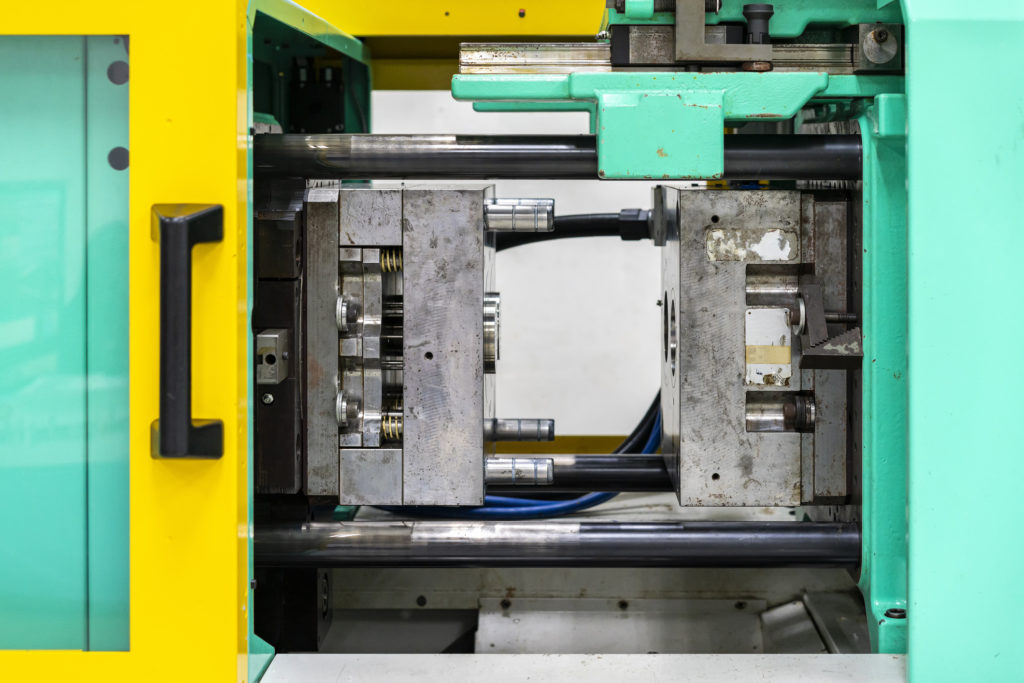The Effect of Plastic Injection Molding on Reducing Manufacturing Costs and Waste
The Effect of Plastic Injection Molding on Reducing Manufacturing Costs and Waste
Blog Article
Understanding the Basics of Plastic Shot Molding Procedures
Plastic injection molding acts as a foundation of modern-day production, providing a methodical technique to generating complex parts with precision. This process not only includes the essential actions of melting and infusing products right into mold and mildews yet also involves a nuanced understanding of different influencing factors, such as temperature and stress. As industries increasingly demand effectiveness and high quality, the ins and outs of this technique come to be extra critical. Exploring these vital aspects might expose how even minor adjustments can lead to significant improvements in manufacturing end results, questioning regarding the potential for development in this well established process.
What Is Plastic Injection Molding?
Plastic shot molding is a commonly made use of manufacturing procedure that transforms thermosetting and thermoplastic materials right into specific and complicated shapes. This method is favored for its capability to generate high volumes of similar get rid of outstanding accuracy, making it a crucial method in numerous sectors, including vehicle, durable goods, and medical tools.
The process entails thawing the chosen plastic material and injecting it right into a mold and mildew under high stress. The mold, created to the requirements of the desired part, allows the molten plastic to materialize as it solidifies and cools. Once the material has solidified, the mold and mildew is opened, and the completed element is expelled.
Plastic shot molding supplies several advantages, including minimized waste, uniformity in manufacturing, and the capacity to include intricate designs that may be challenging with other producing methods. Furthermore, it sustains a wide array of materials, each supplying one-of-a-kind homes that can be customized for certain applications. As markets remain to innovate, plastic injection molding remains at the forefront, enabling the development of advanced items that fulfill progressing customer demands.
The Injection Molding Process
The injection molding process is a sophisticated method that entails numerous vital phases to create premium plastic elements. Plastic pellets are fed into a heated barrel where they are thawed into a viscous fluid. This molten plastic is after that injected under high stress right into a precision-engineered mold, which forms the product into the desired kind.
When the mold is loaded, the plastic is enabled to solidify and cool down, taking the shape of the mold dental caries. Cooling time is essential, as it influences the cycle time and the last buildings of the molded component. After sufficient air conditioning, the mold opens up, and the completed component is expelled using ejector pins.

Products Utilized in Shot Molding
Different materials can be utilized in the injection molding procedure, each offering one-of-a-kind properties that deal with specific applications. One of the most generally made use of products consist of thermoplastics, thermosetting plastics, and elastomers.

Thermosetting plastics, like epoxy and phenolic resins, go through a chemical adjustment during the treating procedure, resulting in a stiff, stringent framework. These materials are suitable for applications calling for high warm resistance and architectural integrity, commonly used in electrical insulators and vehicle components.
Elastomers, consisting of silicone and rubber-based products, give flexibility and durability. Their special properties make them suitable for applications that demand elasticity, such as seals and gaskets.
Furthermore, specialized products like bio-based plastics and compounds are obtaining grip for their ecological advantages and boosted performance characteristics, broadening the range of injection molding applications in various industries. Comprehending the residential properties of these products is crucial for selecting the appropriate type for specific projects.
Advantages of Injection Molding
Injection molding attracts attention as a highly efficient manufacturing procedure that supplies countless benefits for creating complicated parts with read this article precision. Among one of the most considerable benefits is the ability to develop detailed styles that would be difficult or challenging to achieve with various other techniques (Plastic Injection Molding). The process permits in-depth features and limited resistances, guaranteeing top quality components
Additionally, shot molding is understood for its rapid manufacturing abilities, making it a perfect selection for high-volume production. Once the mold and mildew is produced, components can be created quickly, lowering lead times and increasing total productivity. This performance not only decreases manufacturing costs however also supplies an one-upmanship on the market.
The convenience of materials made use of in injection molding additionally enhances its charm. A variety of thermoplastics and thermosetting polymers can be employed, allowing suppliers to choose products that best satisfy their particular needs, including toughness, flexibility, and warm resistance.
Furthermore, the procedure right here decreases waste, as excess material can typically be reused and recycled. This sustainability aspect contributes to a minimized ecological influence, making injection molding a responsible manufacturing option. On the whole, the benefits of shot molding make it a preferred method for numerous markets.
Aspects Influencing Item Top Quality
While countless factors can influence product quality in injection molding, comprehending these aspects is critical for achieving optimal results. Key aspects include material selection, refining criteria, and mold and mildew layout.
Product selection plays a crucial duty, as various polymers show one-of-a-kind properties that affect flowability, strength, and thermal security. Poor material choice can result in defects such as bending or insufficient dental filling.
Handling specifications, including pressure, temperature level, and cycle time, have to be diligently controlled. Variants in these settings can result in incongruities in component dimensions and surface coating. As an example, excessively high temperature levels might cause destruction of the polymer, while poor pressure can cause brief shots.
Mold and mildew style is equally vital, as it figures out the flow of the molten plastic and the cooling procedure. Badly made molds might result in irregular cooling prices, leading to recurring anxieties and dimensional errors.

Final Thought
To conclude, plastic shot molding functions as a critical production procedure that makes it possible for the reliable manufacturing of high-quality elements. Mastery of the shot molding procedure, including the understanding of products and the impact of numerous variables on item quality, is essential for attaining ideal outcomes. The advantages of this approach, such as cost-effectiveness and layout versatility, more emphasize its relevance across numerous markets, solidifying its standing as a recommended option for high-volume production.
Plastic shot molding serves as a foundation of modern-day production, offering a systematic method to generating complex parts with accuracy.Plastic injection molding offers a number of advantages, consisting of lowered waste, uniformity in production, and the capacity to incorporate complex designs that may be testing with various other manufacturing techniques (Plastic Injection Molding). As sectors proceed to innovate, plastic injection molding stays at the leading edge, allowing the growth of innovative items that fulfill developing customer needs
The shot molding process is an innovative method that entails a number of essential phases to create high-quality plastic parts.In conclusion, plastic shot molding offers as a vital manufacturing procedure that enables the reliable manufacturing best site of premium parts.
Report this page